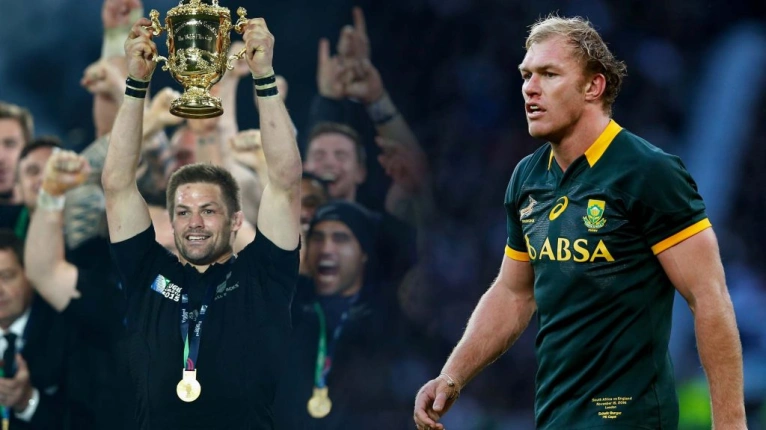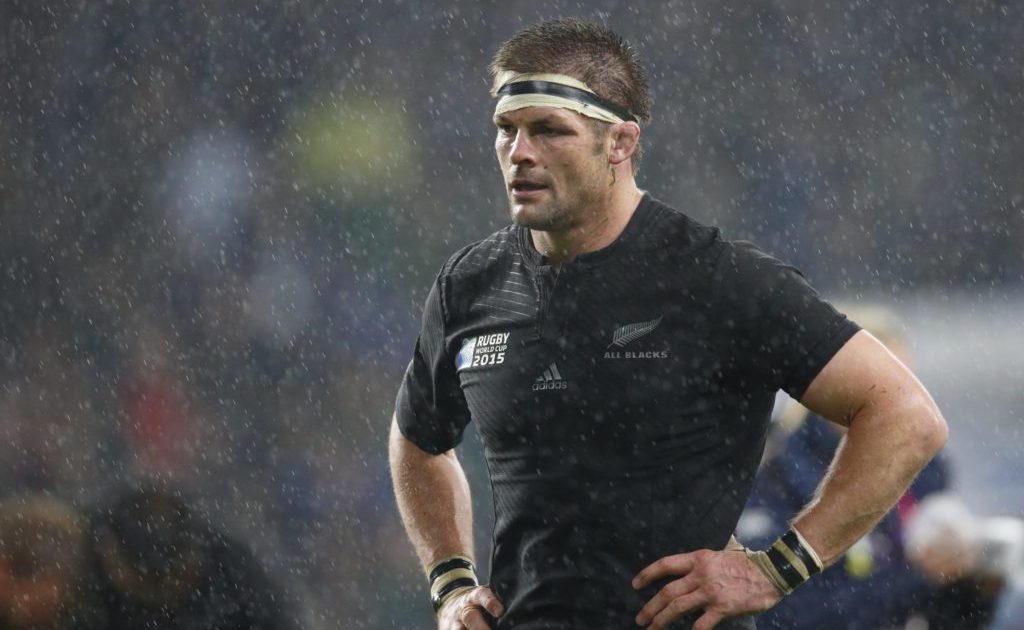Openside Flanker - Position Guide

Each rugby union side contains both an openside flanker and a blindside flanker. Within the game, these players have very important roles. This is because they’re responsible for securing and maintaining possession for their side.
There are very few differences between the roles of the openside flanker and the blindside flanker (although we’ll cover these differences in some detail later).
Generally speaking, both flankers are among the fastest forwards in the team, and both are tasked with protecting the ball, maintaining possession and providing support play. What’s more, both flankers also play an important role at the lineout and in the scrum.
In this position guide, we’ll take a detailed look at exactly what an openside flanker does in a game of rugby union. We’ll outline the key responsibilities of the position, identify some of the finest openside flankers to ever play the game and look at the differences between the openside flanker and the blindside flanker, so you can decide which of the two positions is right for you.
What is an openside flanker?
An openside flanker is a member of the forwards. Each team has one openside flanker, and they line up at the back of the scrum with the number eight and the blindside flanker.
Most openside flankers are incredibly physical players who relish competition, challenges and contact. In ensuring the opposition forwards do not make it over the gain line, they’re asked to perform a high number of tackles in every game. That said, the openside flanker position isn’t a purely defensive one.
When the openside flanker’s team is in possession of the ball, they are asked to ensure possession is maintained when their teammate is tackled. In this respect, the role of the openside flanker is slightly different to the role of the blindside flanker.
Generally speaking, the blindside flanker is the larger of the two flankers. As a result, they take responsibility for making big tackles and charging into the opposition’s defensive line.
Although the openside flanker is also responsible for this, more emphasis is placed on them moving to the breakdown quickly to disrupt the opposition’s ball. Due to this, they’re usually slightly smaller and more agile.
Other names for an openside flanker
Around the world, some fans know rugby positions by different names. Thankfully, this isn’t the case with the openside flanker, which is known by the same position name around the world.
However, that said, there are some old-fashioned terms for the position that you may hear from ex-pros or if you’re watching highlights of old matches. This is because, before rugby union became professional in the 1990s, flankers were often known as breakaways. For this reason, you may hear the openside flanker called the openside breakaway.
What number is an openside flanker?
A starting XV in a rugby union side line up from 1-15. Unlike other sports where players can choose their own number, in a game of rugby union a player will wear the number that corresponds to their position. For the openside flanker, this is the number 7 shirt.
What is the average size of an openside flanker?
Openside flankers are quick and athletic players who also relish contact. As a result, they’re all-rounders who need to excel at almost every facet of the game.
Due to the role that the openside flanker plays at set pieces (which we’ll discuss in greater detail later), anyone playing in this position usually needs to be tall. In fact, at the elite level, the average openside flanker is 1.89m (6ft 3in) tall.
But, at the international level, being tall isn’t enough to help someone excel at the openside flanker position. In fact, even at local rugby clubs, openside flankers need to be strong and powerful. However, because they do lots of work around the field, they cannot afford to sacrifice mobility and agility. That said, openside flankers do still tend to be incredibly muscular and elite openside flankers usually weigh around 100-kg-105kg, or 221lbs to 242lbs.
What is the openside flanker’s role?
The openside flanker is an all-rounder who makes a huge impact on the game. However, their greatest influence on the game usually comes at set pieces. With this in mind, let’s take a look at exactly what an openside flanker is responsible for in the scrum and at a lineout. We’ll then take a closer look at exactly what they do in open play.
What is the openside flanker’s role in scrums?
The name ‘flanker’ comes from the position of the player in the scrum. A member of the back row, the openside flanker is used to ‘flank’ the forwards.
At scrum time, the openside flanker packs down on the open side of the scrum. By this, we mean the side of the scrum where there is more space between the scrum and the sideline. This means that the openside flanker does not have a fixed position at the scrum. They may line up on the left or the right of the scrum, depending on where the space is.
In the scrum, the openside flanker is expected to provide pushing power. However, this is not their main role. Instead, they’re expected to detach from the back of the scrum as soon as the ball is out so they can get to the play before other opposition forwards do.
As the openside flanker has much more ground to cover than the blindside flanker, they need to be quicker than their counterpart. They also need to be more mobile and have a great level of endurance.
What is the openside flanker’s role in lineouts?
At the lineout, the openside flanker plays an important role as a reliable jumping option. They usually stand towards the back of the lineout, where they’re asked to either jump and compete for the ball, or act as another lifter.
However, in defensive lineouts, the openside flanker is not asked to lift other players. Instead, they’re usually used to attack the opposition’s fly half when the opposition emerges with the ball. Openside flankers are key tacklers in a game of rugby, and this is one way they can stop the opposition from gaining important meters.
What is the openside flanker’s role in open play?
In open play, the openside flanker is expected to win the ball and put in tough tackles. Openside flankers are always involved in the game and have a lot of ground to cover, so they need to be as mobile as they are strong.
Added to this, because the openside flanker is always close to the ball, they are often first to the breakdown. Here, they are tasked with getting their hands on any loose balls. They may also cause a breakdown by tackling the ball carrier or otherwise hurrying them and forcing an error. One of the main jobs of an openside flanker is to get over the ball and attempt to steal it or win a penalty.
When their side has possession, the main responsibility of an openside flanker is to be the first player to the attacking breakdown. Here, they clean out defensive players and ensure their side retains possession. They are usually the first player on the shoulder of an attacker when a linebreak is made, and are frequently thought of as the link player between one phase and the next.
Notable openside flankers

In our recent Hall of Fame vote, we asked our readers who they thought was the best openside flanker to ever play the game. The result was near unanimous, and All Blacks legend Richie McCaw won by a landslide. Other openside flankers to receive votes included Schalk Burger, David Pocock and Sam Warburton.
In the current game, Michael Hooper is widely regarded as the best openside flanker of his generation. However, he faces stiff competition from England’s Tom Curry.
FAQs
Those are the basics of the openside flanker position. However, to help you learn even more about what it takes to be an outstanding openside flanker, we’ve answered a number of popular reader questions below. So read on to learn more about why openside and blindside flankers are different sizes, and the work an openside flanker usually does in the gym.
Why are openside flankers smaller than blindside flankers?
In most rugby union sides, the openside flanker is smaller than their blindside counterpart. Although it’s not essential this is the case, being slightly smaller does provide benefits for an openside flanker. This is because openside flankers need to be more mobile than blindside flankers.
After all, openside flankers need to spring up from tackles, cover more ground than the blindside flanker and move to get into defensive positions more quickly.
By comparison, the openside flanker is usually heavier because they don’t have to do quite as much running. Instead, they’re required to make big and dominant tackles that move the opposition backwards. In attacking situations, they’re also used as a battering ram that draws the attention of opposition defenders.
What gym exercises are best for openside flankers?
Openside flankers relish physicality. Due to this, it’s important that anyone playing in this position is incredibly strong and is able to win physical duels.
To excel at the openside flanker position, players need strength throughout their body. However, their leg muscles, triceps, shoulders and chest must be particularly strong. Due to this, if you’re currently playing as an openside flanker and want to improve the physical side of your game, then you should focus on performing:
- Deadlifts
- Squats
- Bench press
- Overhead press
- Lunges
- Barbell rows
That said, being an openside flanker isn’t all about strength and power. Due to this, you should also perform drills that help improve on your agility and your explosiveness. After all, if you bulk up too much, you’ll struggle to get around the field adequately. So, always keep in mind that most openside flankers at the elite level can run 3km in 11 mins 45 seconds and can sprint 40m in under 5 seconds.



















































